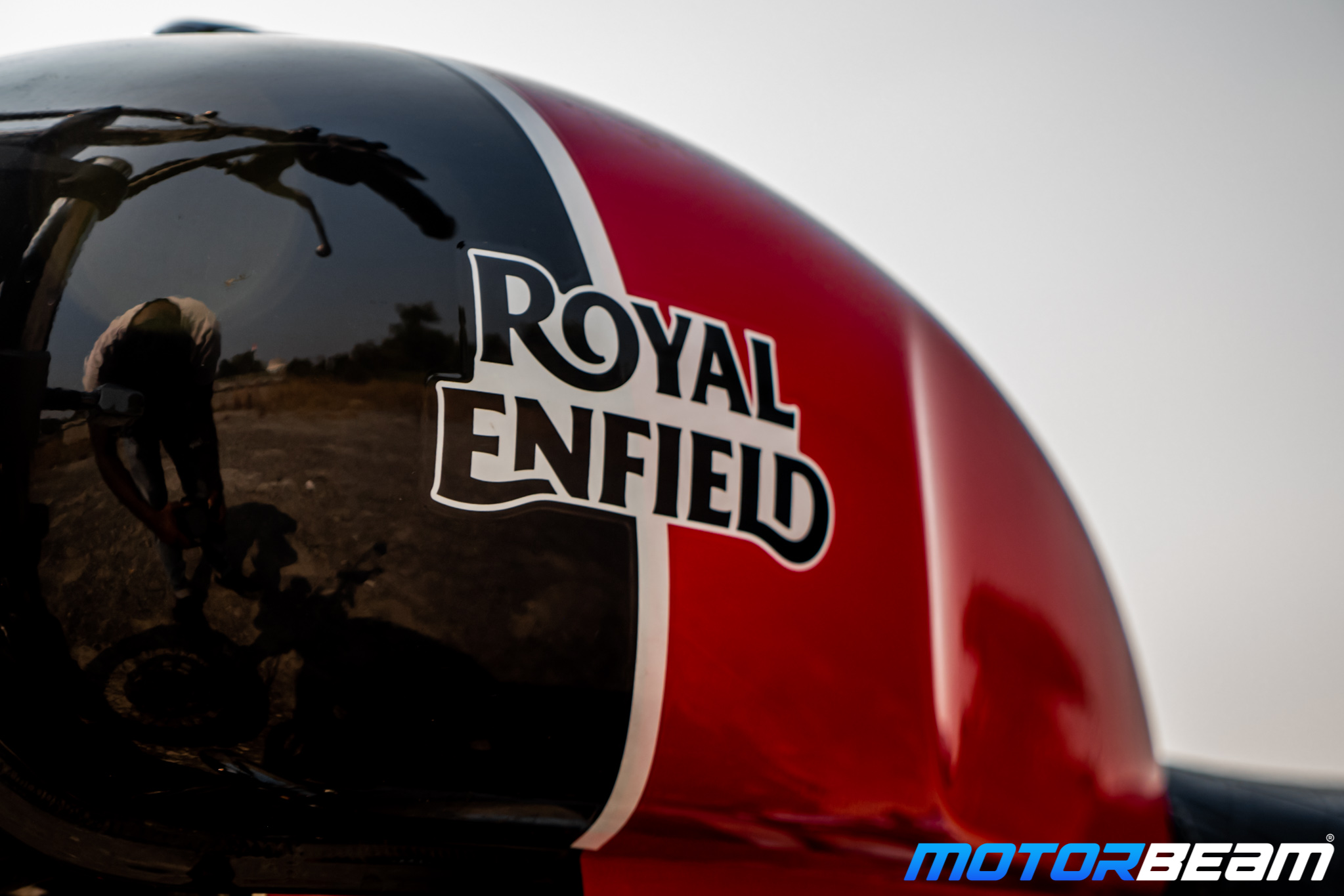2020 Royal Enfield Interceptor 650 Test Ride Review
We ride the latest iteration of RE's twin-cylinder offering, the Interceptor 650.
We ride the latest iteration of RE's twin-cylinder offering, the Interceptor 650.
Home » Bike News » Royal Enfield Interceptor » 2020 Royal Enfield Interceptor 650 Test Ride Review
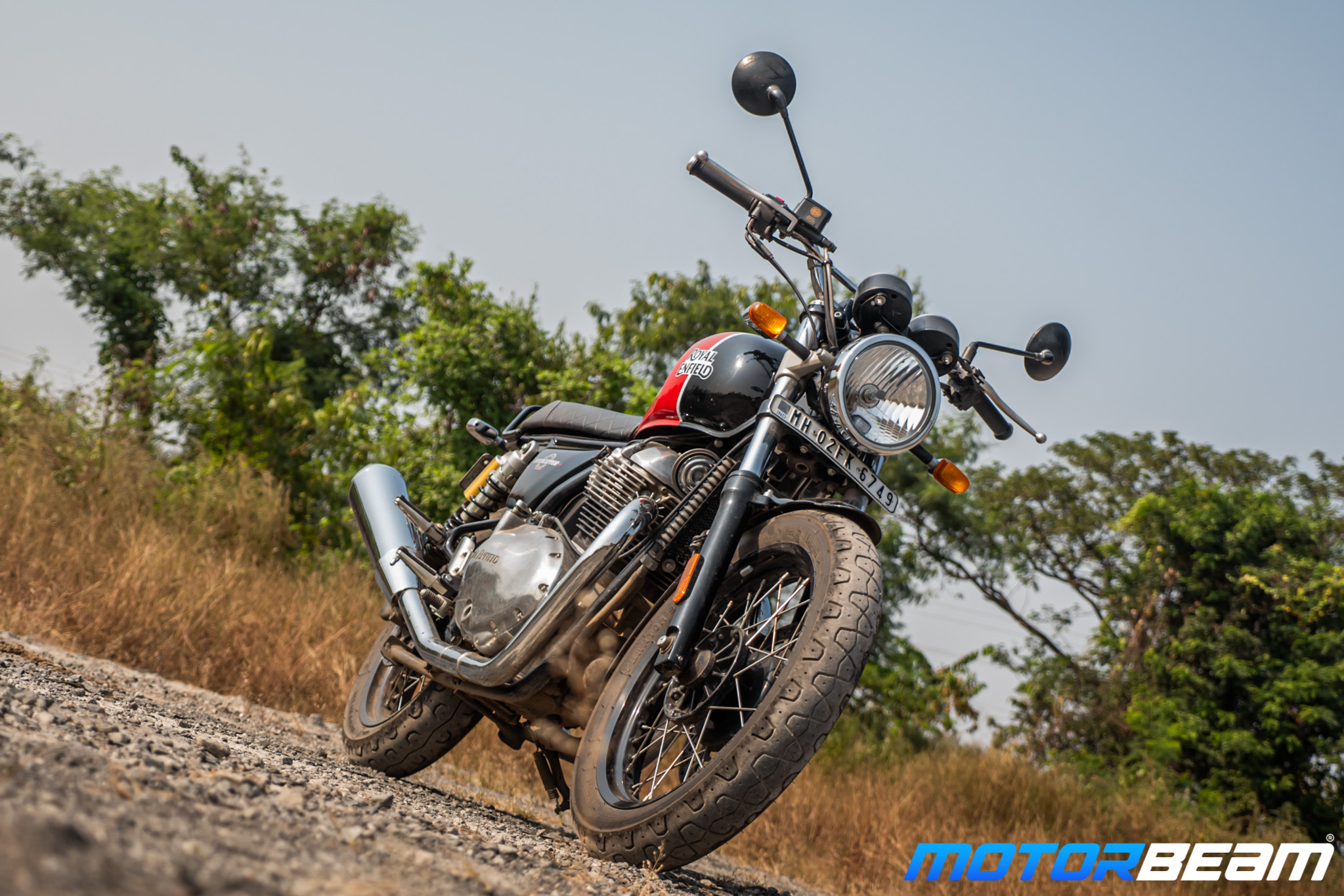
Bike tested: Royal Enfield Interceptor 650; Road Test No. 1270; Test Location: Mumbai
Price OTR Mumbai: Rs. 3,24,140/-
The Interceptor 650 is the only indigenous twin-cylinder offering from Royal Enfield
The Royal Enfield Interceptor 650 came to market in 2018 and it’s been one of the most globally renowned REs since. It was the first twin-cylinder offering by an Indian manufacturer which made it even more special. The classic styling, likeable motor, good performance and comfortable ergonomics result in an unbeatable package, especially at the price point RE offers it. For 2020, RE has left the Interceptor relatively untouched, other than the fact that it now adheres to the BS6 norms. However, the price has hiked which makes us re-think whether it still offers the same price-to-performance ratio which it did 2 years ago. This is exactly what we aim to find out in our detailed test ride review of the BS6 Royal Enfield Interceptor 650.
MotorQuest: The RE 650s have been a game-changer for the manufacturer and they check almost all the right boxes. The Interceptor 650 was the well-behaved offering between the two, and it serves as a great do-it-all motorcycle. The aggressive pricing which makes it the most affordable twin-cylinder bike in India is like a cherry on top too. The 650 sees a small price hike for 2020, and we’re curious to see how this has affected its epic value.
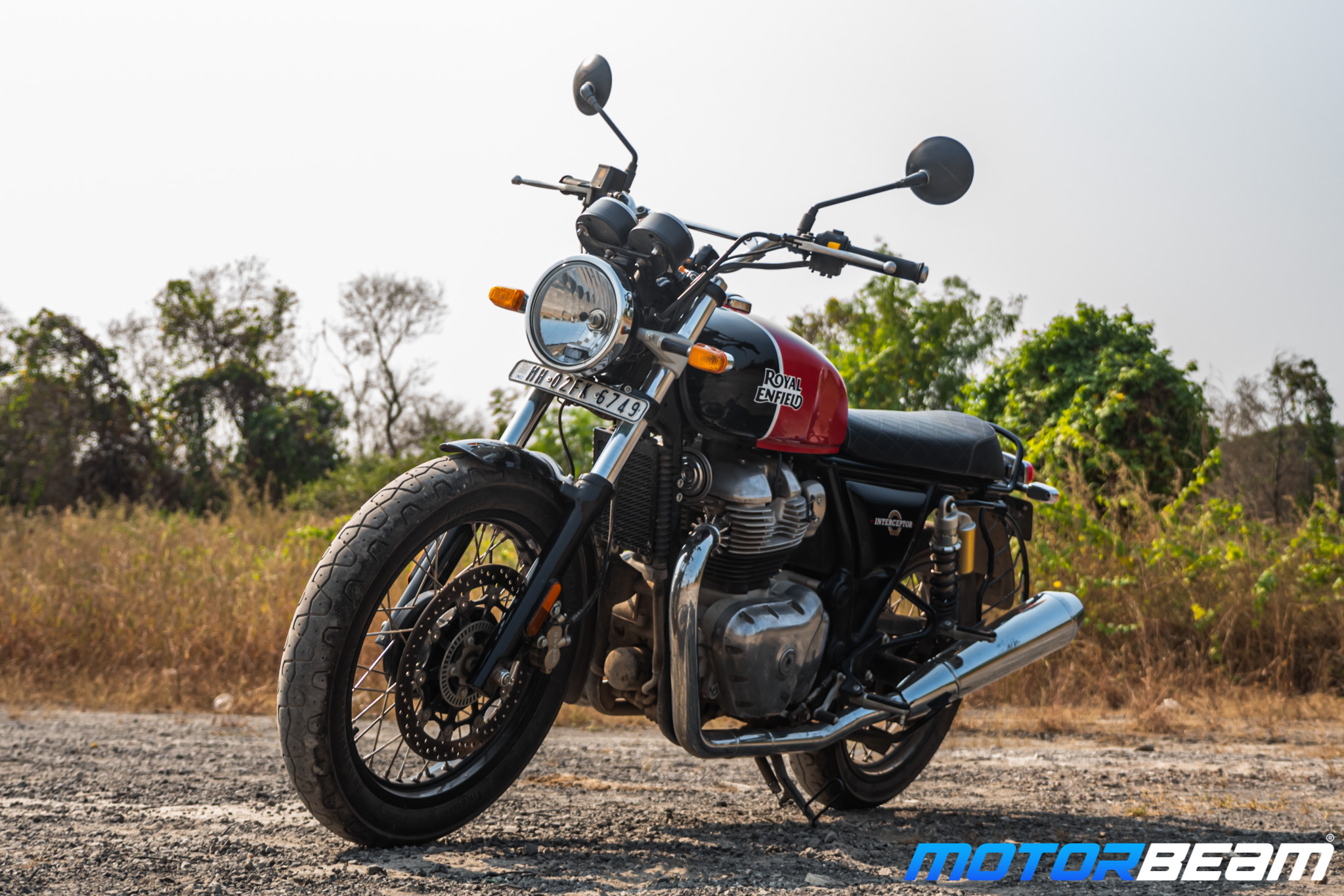
Styling: The BS6 iteration of the Interceptor 650 is really hard to differentiate from its BS4 counterpart because it looks exactly like the previous model. The design was likeable back then, and it still is. It gets a round halogen headlamp, a flat seat, spoke wheels, chrome accents, and even a chrome engine. All this makes the bike look classic, and the bike shouts RE from every angle. Moreover, you get 6 colour options just like before, which makes life even better for the consumer. Some models also get blacked out rims, adding to the overall swagger of the bike. However, we think the full halogen setup is dated and the addition of LEDs can definitely add a lot to the overall package. Overall, the Interceptor 650 remains exactly the same as before and continues to offer the same old school design with good quality levels.
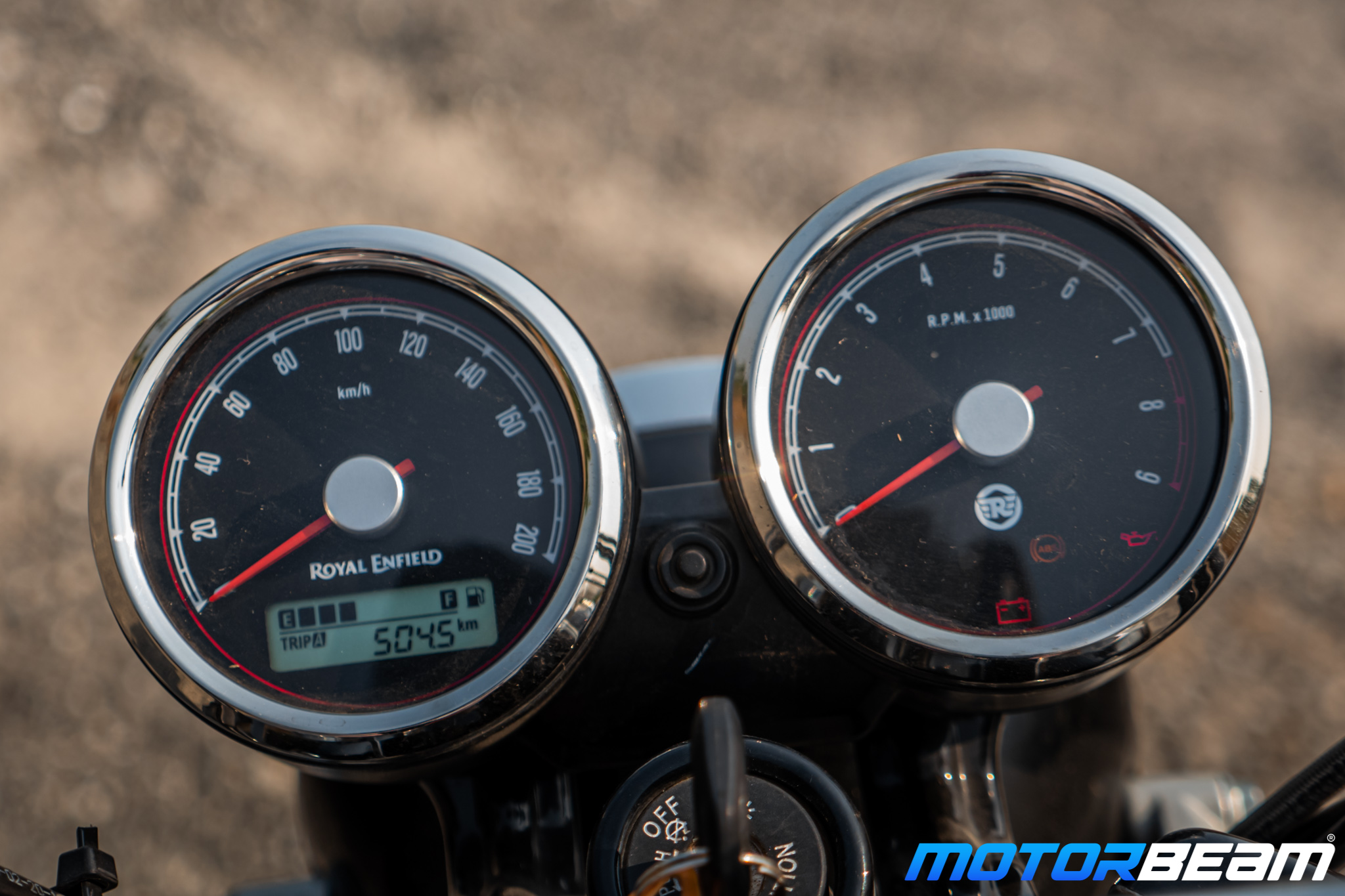
Instrument Cluster and Switchgear: The Royal Enfield Interceptor 650 keeps its twin-pod instrument cluster and the switchgear. It is a semi-digital unit, but the digital piece is small and information on offer isn’t great. The speedometer and the tachometer are analogue while the digital unit has two trip meters, odometer and a fuel gauge only. Clearly, RE wanted to keep it vanilla to go with the overall motorcycle, but in 2020, it just feels dated and misses out on even a clock. There are rumours that the Tripper navigation system from the Meteor could soon come as an accessory for the 650, though, which might help its case. The case remains the same for the switchgear too, and it might feel dated in today’s times.
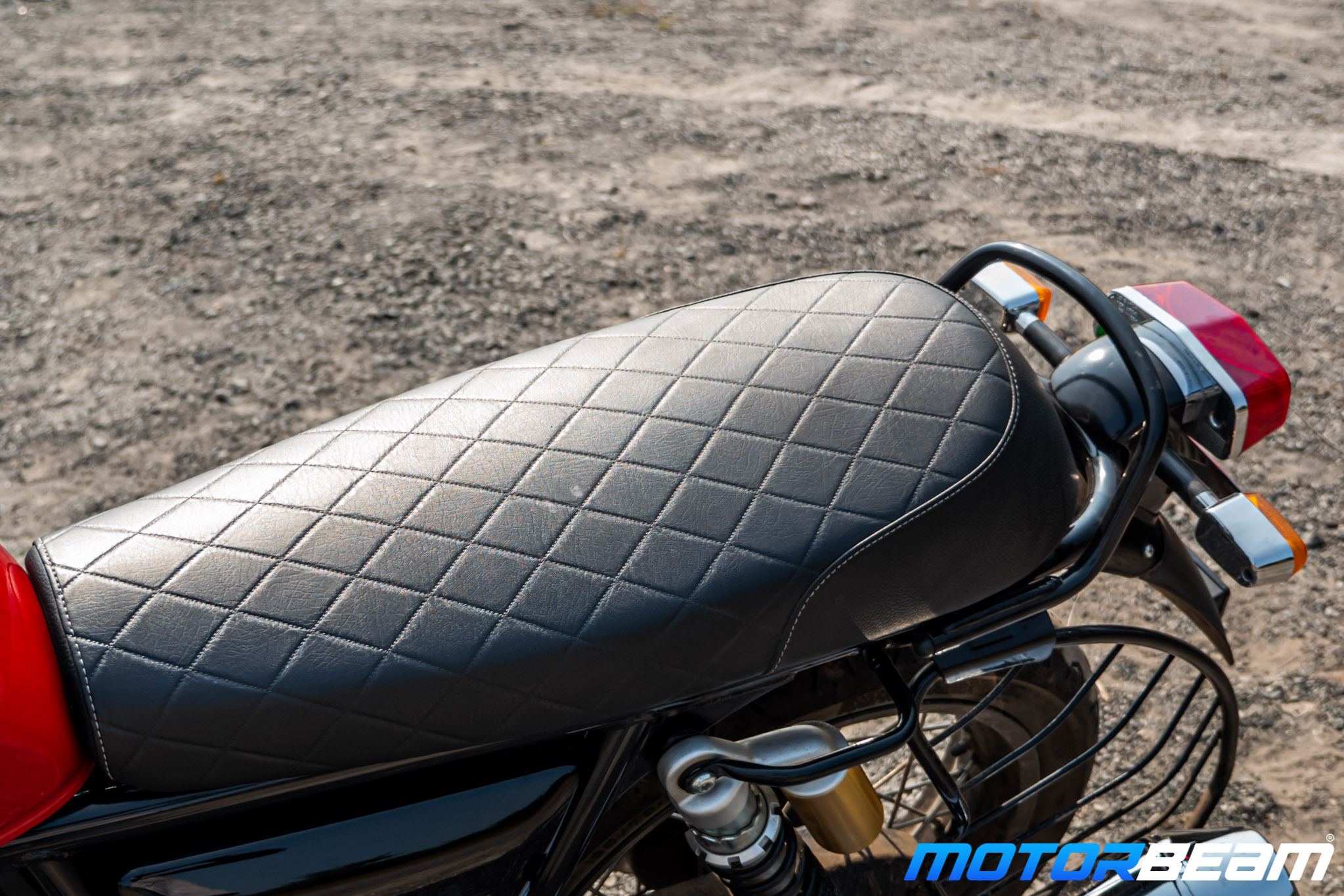
Ergonomics: The RE Interceptor 650 is a comfortable motorcycle and offers an upright riding posture which is likeable for most people. The seat height at 804 mm and the centre-set footpegs further help its case too. The only gripe we had with the previous-gen Interceptor was its narrow seat and sadly, nothing has changed. The seat converges towards the tank, making it a tad uncomfy for the rider while offering decent comfort for the pillion. The protruding exhausts, obtrusive centre-set footpegs and the engine further make the ride a little uncomfortable, especially when moving the bike around. However, the tank shape is nice and helps the rider lock his/her knees easily, offering good support. Lastly, the mirrors offer a good view of what’s behind but feel cheap and vibrate at high speeds, making them not too practical.
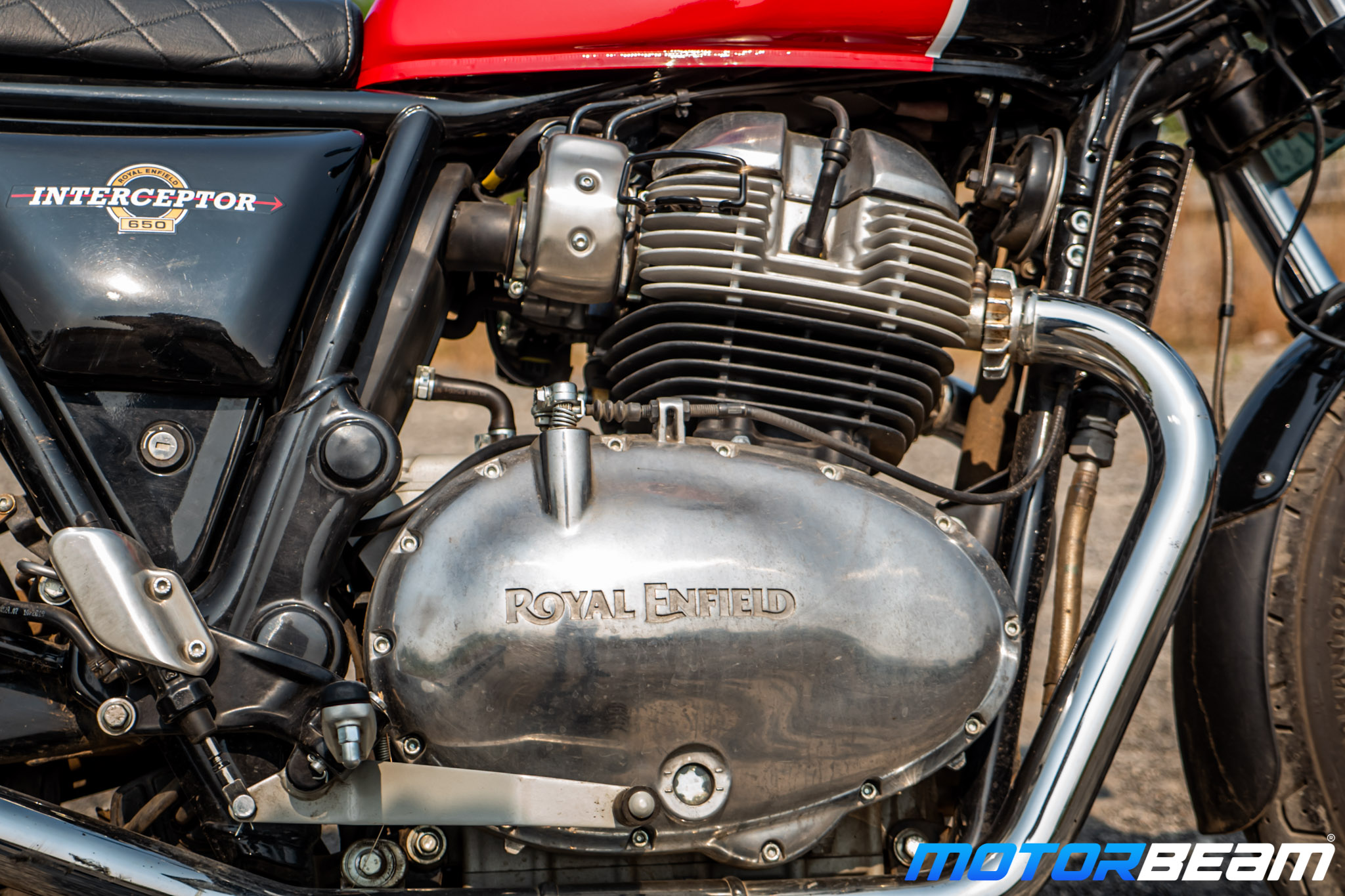
Performance: Like many motorcycles, the biggest update for the 2020 Interceptor 650 is its BS6 compliancy. The 648cc parallel-twin engine adheres to the BS6 norms and produces 47 BHP at 7150 RPM and 52 Nm of torque at 5250 RPM. The performance has remained the same overall, but RE says that about 80% of torque now comes in at as low as 2500 RPM. Consequently, the Interceptor feels more lively now and the mid-range punch is stronger than ever. The motor has retained its high refinement levels, thanks to the counter-balancer, and the motor doesn’t feel stressed even at triple-digit speeds.
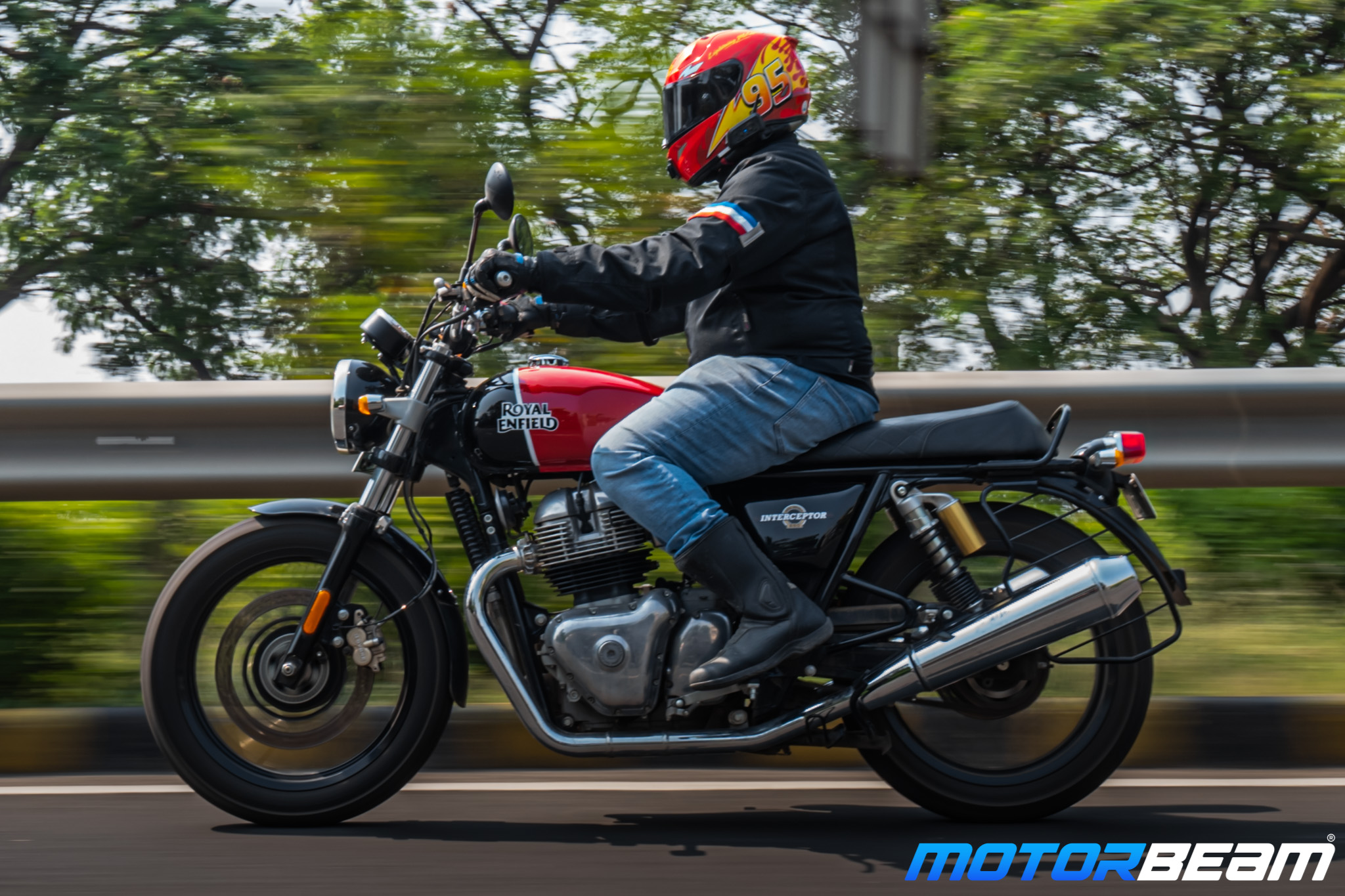
The engine now complies to BS6 norms and feels punchier than before
The Interceptor hits the ton in 6.32 seconds while the gearbox is another positive it has retained. The six-speed gearbox is slick-shifting, and the clutch feels light, making city duties a cakewalk. A slipper-clutch is also present to help you keep things in control at all times. Heating issues might bother a few people, but that’s mainly because your legs sit too close to the engine. Coming to efficiency, the BS6 Interceptor returned 28 km/l during our test, which rounds up the total range of the 13.7-litres to around 350 km.
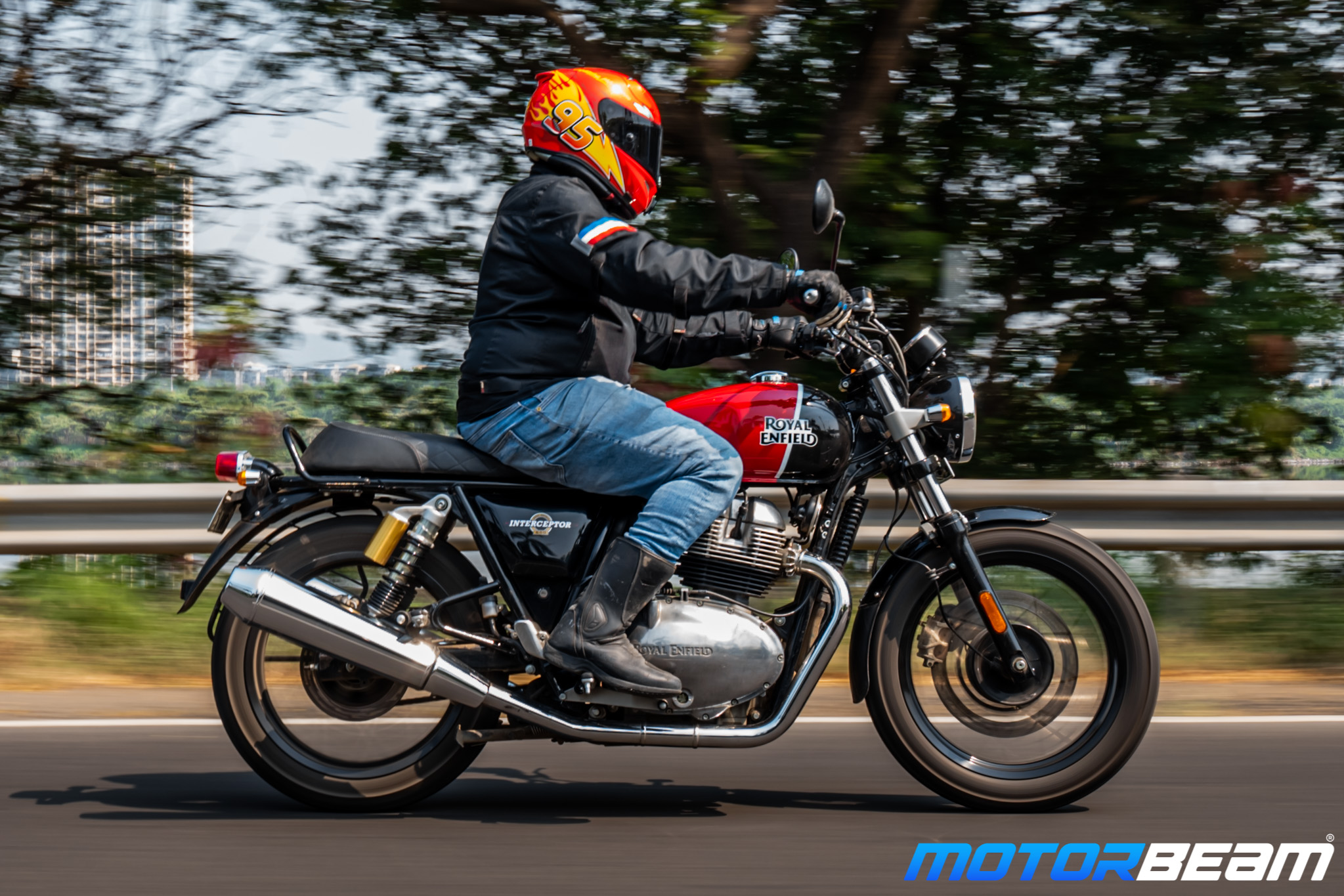
Riding Dynamics: Like almost all aspects, the RE Interceptor 650 sees no change here. 41 mm telescopic forks upfront and a 5-step pre-load adjustable twin coil-over-shock setup at the rear perform the suspension duties. In the stock iteration, the suspension is soft and can take on almost anything you throw at it. However, the suspension travel at the rear is just 88 mm, which means it bottoms out when you hit hard bumps. No need to worry, though, as there’s plenty ground clearance at 174 mm. Apart from this, the front end of the RE is confidence-inspiring and the bike flicks into corners without hesitation.
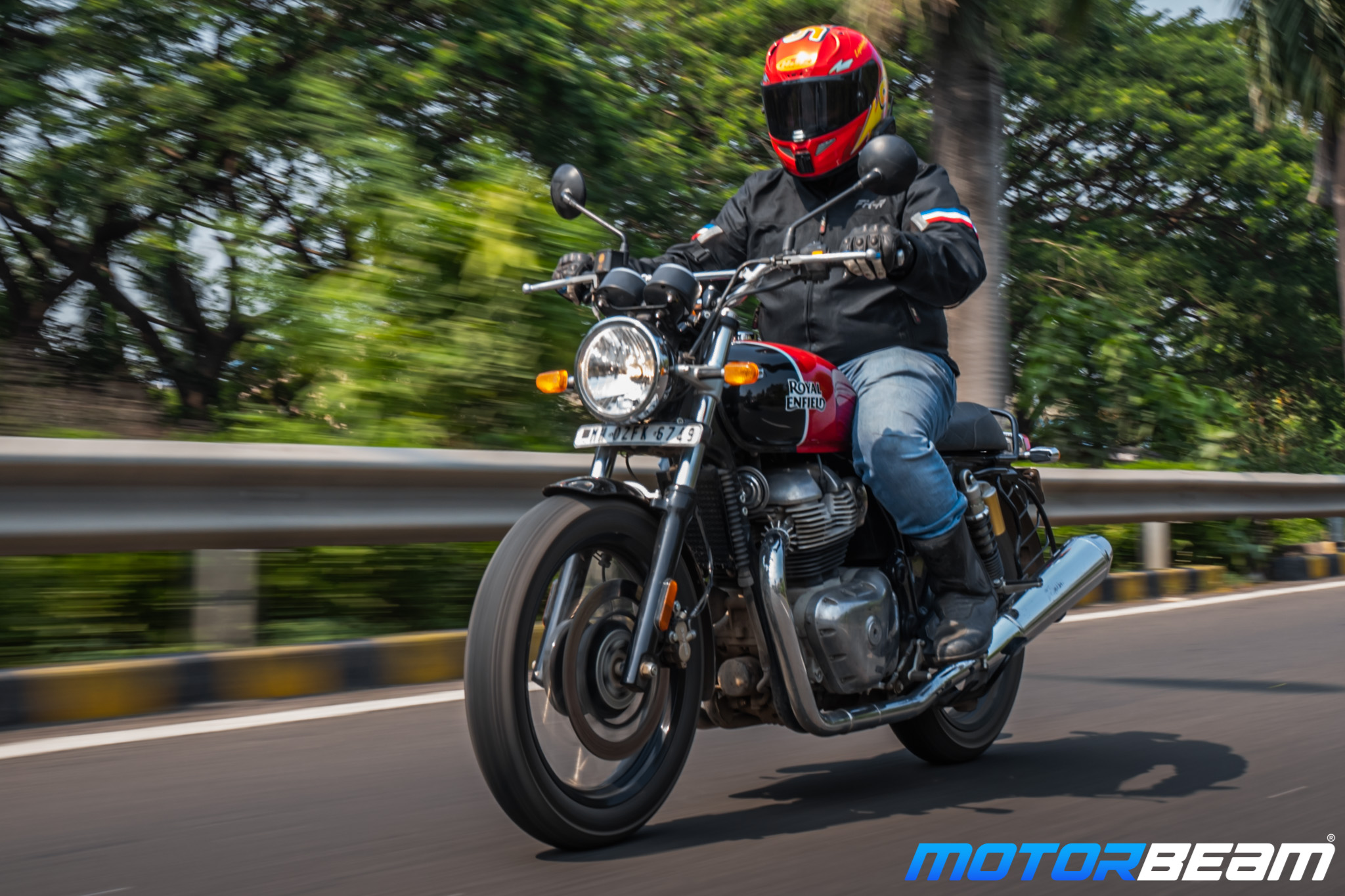
The Interceptor 650 keeps all its strong points and offers likeable riding dynamics
The braking setup has remained the same as well, and there’s plenty of stopping power at hand. Dual-channel ABS is standard too, as a safety net when things get tricky. However, while the long-wheelbase offers good straight-line stability, the handlebar feels jittery at anything over 140 km/hr. Also, at 202 kg (dry), the Interceptor 650 has gained a little weight which doesn’t help its case either. Overall, the Interceptor 650 still retains its positives from before and rounds up as a pretty versatile offering.
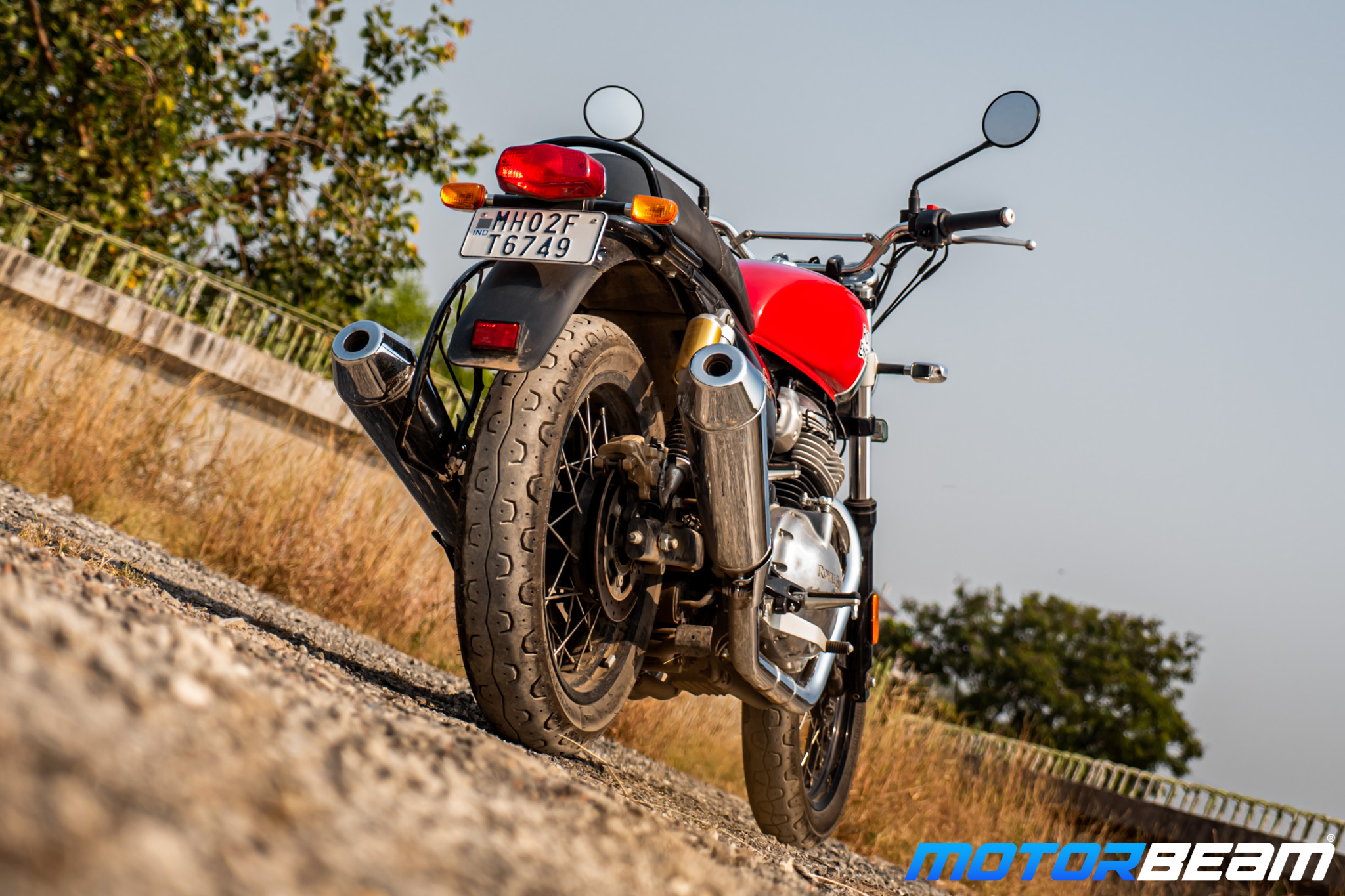
Verdict: At Rs. 3,24,140/- (on-road, Mumbai), the Royal Interceptor 650 has become dearer but not by an acceptable margin. Does it justify the hike? Not really, but considering the ongoing price hike trend, it is huge damage limitation by RE. Even after the price hike, there’s no other motorcycle that comes close to offering the versatility and the living cost of the Interceptor, especially in a twin-cylinder setup. Surely, the price-to-performance ratio has seen a decrement, but the Interceptor still remains a top recommendation from our side to anyone looking for an easy-going twin-cylinder offering in today’s times!
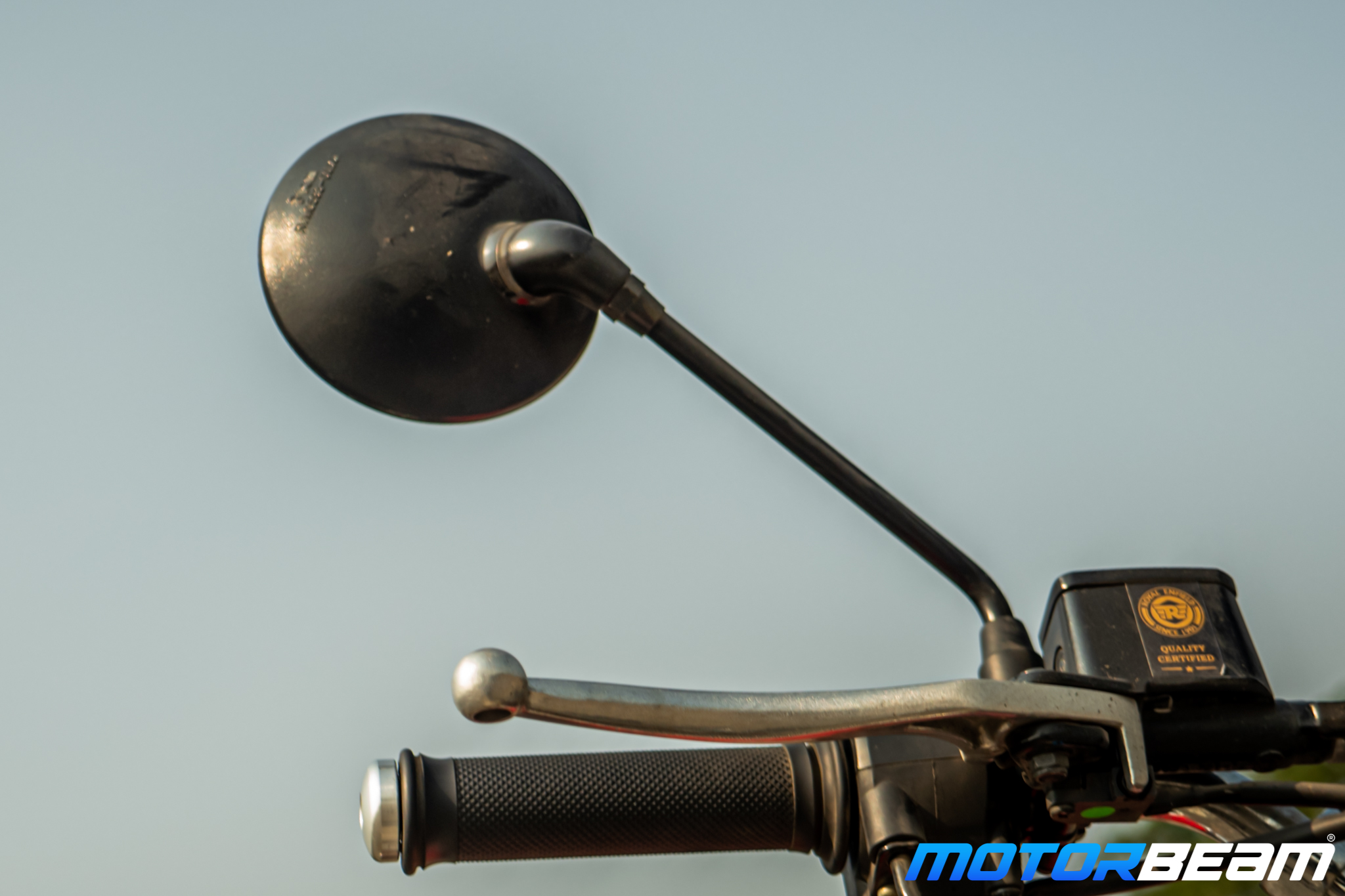
What’s Cool
* Riding posture is comfortable
* Engine is likeable and has plenty of punch on offer
* Brakes have brilliant feedback while the stability is confidence inspiring
What’s Not So Cool
* Instrument cluster could use an update
* Seat is narrow, thus making it unsuitable for long stints
* Halogen headlight has a good throw but LEDs would have been better
* Engine: 648cc, Oil-Cooled, Parallel-Twin
* Power: 47 BHP @ 7150 RPM
* Torque: 52 Nm @ 5250 RPM
* Transmission: 6-Speed With Slipper Clutch
* Top Speed: 155.6 km/hr (VBOX)
* Fuel Type: Petrol
* Fuel Consumption: 28 km/l
* Frame: Steel Tubular Double Cradle Frame
* Suspension: 41 mm Telescopic Forks (Front), Twin Gas Charged Shocks (Rear)
* Tyres: 100/90/18 (Front), 130/70/18 (Rear)
* Brakes: 320 mm Disc (Front), 240 mm Disc (Rear), Dual-Channel ABS
* Length x Width x Height: 2122 mm x 1165 mm x 789 mm
* Wheelbase: 1400 mm
* Seat Height: 804 mm
* Ground Clearance: 174 mm
* Fuel Tank Capacity: 13.7-litres
* Kerb weight: 202 kg (Dry)
